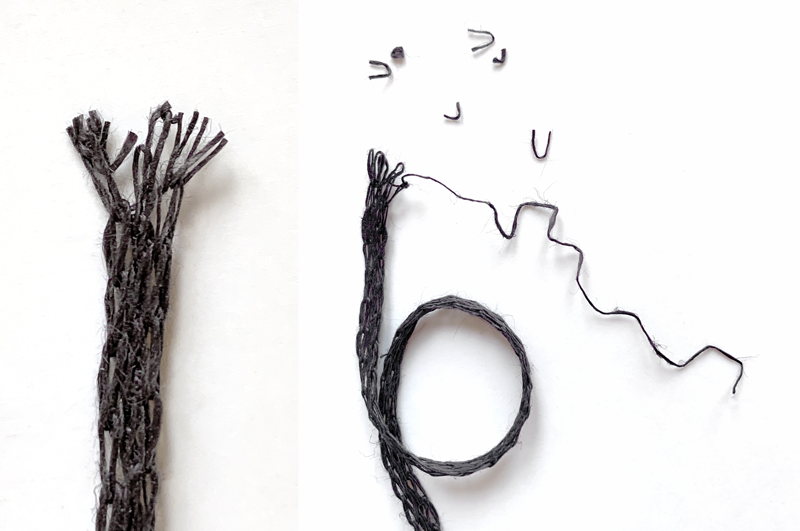It’s no secret that I love Quince and Company’s 100% organic linen Kestrel yarn. Its beautiful drape and Aran gauge make it my perfect yarn for those in-between days, when the temperatures are neither blistering hot, nor icy cold. Over the years I’ve knit countless garments in Kestrel, and much as I adore it, the one thing I’ve found consistently challenging is how to join in new skeins invisibly.
I’ve written previously about a join I’ve used at the edges of a piece that’s knit flat, and while still a good join, that method doesn’t work when knitting in the round, and it sometimes leads to a little more waste than I’d prefer.
Others have recommended joins that take advantage of the tubular structure of this yarn, pulling one end into the open tube of the other—but I find that at the more open gauge that I prefer to knit Kestrel at, this can be visible as a thickened area in the work. The same goes for just weaving in the ends.
INTRODUCING THE SEWN BUTTED JOIN
The method I'm using these days for joining in new skeins of Kestrel involves sewing the end of the new skein directly to the old one. It is super invisible, and although the joining process takes a little time, it’s really no more time than weaving in ends—plus, it is easier than you'd think! As well as reducing bulk, it means that you can use every last bit of your yarn.
Kestrel is what is known as a chainette yarn. Although it knits up at an Aran weight, it is actually composed of a single running strand of very fine linen thread that has been knit into a tube shape. The tube is later flattened to form a ribbon or tape, but the structure remains the same. It can be unravelled like any other piece of knitting, and the free strand can be used to join one end of a piece of Kestrel to another.
The basic idea is that you unravel a strand on both ends to be joined, thread each one onto a sewing needle, and sew the ends together. The resulting join is very stong, and once the garment has been washed, it is next to impossible to find—so you can join in new yarn anywhere, not just at the edges of the piece or under the arms.
WORKING THE JOIN
Because the yarn has a knit structure, any cut end will have some partial loops, little unconnected Vs of linen thread. You can see these in the close-up photo on the left below. To get a strand that will pull out cleanly, you'll want to remove these loose bits. So before unravelling the yarn end, fan out the loops on the cut end of the yarn, and tease out the little loose Vs. Tweezers can help if you have a hard time grasping them. Once you've removed them, the running thread of the knitted tube will pull cleanly, leaving complete loops to join to.
Pull out a strand about 6" [15 cm] long on each yarn end. Moisten the strands, and run them through your fingers to staighten out any kinks. Now thread a sewing needle with one of the strands, and pass the needle through a few of the loops on the end of the second strand. Pull the thread tight enough that the ends of the two pieces butt up against each other, and pass the needle through a few loops on the first yarn end. Work back and forth until you have caught all the loops with the first thread, then weave the needle in and out of the strand of yarn, working the free end of the strand away from the join. Trim the thread end close to the chainette tube. Repeat for the other unravelled strand, making sure that all of the loops on each side of the join have been caught. Pull on the two strands to test, then trim the remaining thread end. That's all there is to it!
Hope you find this technique as useful as I have!




